Interviewed and Written by Patrick Mc Gavin 7/09
GERALD SCHMITT ’58
Sports are the great meritocracy of American life. They require no credentials, qualifications, preapproval or particular social standing. They just are. Regardless of the game, the sport, the competition, sport is the means by which a great many people defined themselves. It was especially so in the first half of the 20th century; sports were the connecting thread, the social nexus, of the young men and women who were first or second generation Americans.
sport, the competition, sport is the means by which a great many people defined themselves. It was especially so in the first half of the 20th century; sports were the connecting thread, the social nexus, of the young men and women who were first or second generation Americans.
They were almost certainly mavericks, “outsiders,” the Irish, Germans, Italians, African-Americans and Jews, who viewed sport as a way to establish equal footing, regardless of family origins or national heritage. Sports became the guidepost to neighborhoods and communities. Sport was how they measured themselves against each other. Given the pedagogical nature of American education, marked by hierarchal structures and discipline, schools became a natural means to identity, train and pool individual talent for team competition.
 Jerry Schmitt always stood out. He was the son of second-generation German émigrés whose family lived in St. Sabina, a parish that was predominantly Irish. He dealt with heartbreak and difficulty at a young age; he spent a crucial part of his childhood in a sanitarium on Michigan Avenue that necessitated him to drop first grade. Even so, he survived and prospered.
Jerry Schmitt always stood out. He was the son of second-generation German émigrés whose family lived in St. Sabina, a parish that was predominantly Irish. He dealt with heartbreak and difficulty at a young age; he spent a crucial part of his childhood in a sanitarium on Michigan Avenue that necessitated him to drop first grade. Even so, he survived and prospered.
In time he became one of the greatest athletes in the early history of Leo High School. He was a basketball and track star whose preferred sport, baseball, Leo did not field a program at the time. Sports were a preoccupation; more important, they helped him find his “voice,” his sensibility, and Mr. Schmitt discovered where it could take him.
“Nineteen fifty-one was a nice year for me,” Mr. Schmitt recalled, sitting in his home office during a spring afternoon. Mr. Schmitt was a south sider who grew up in Sabina, but in temperament and style, he loved the Chicago Cubs. “That fall I was invited to go up to Wrigley Field and [the Cubs’ players] hit you some balls,” he said. His favorite players — Phil Cavaretta, Tony Pyrett, Red Favor — were positioned on the immaculately drawn infield that denoted a cathedral-like importance. He carried his mitt with him, and he ran around the beautiful field, “shagging,” balls that were hit to him. In turn he also got to whip the ball around the infield.
“I talked with Hank Sauer, and he was probably about six-foot, three-inches,” Mr. Schmitt said. “He let me hold his bat, and I couldn’t even swing it. He was a giant of a guy and his bat was so long and heavy.”
In the spring of 1951, young Jerry, his best buddy, Tom O’Malley and two other friends, were preparing to run in the fabled Chicago Daily News Relays, held every spring at Chicago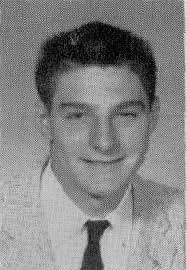 Stadium on West Madison Avenue. They were just pip squeaks of kids, but they were fast, competitive and they were avid to prove themselves against other Catholic and public school communities. “Our coach was Jim Brennant, and he took us down to the Stadium. It was the same night Bob Richards, a pole vaulter, set the indoor record at 14 or 15 feet, something.
Stadium on West Madison Avenue. They were just pip squeaks of kids, but they were fast, competitive and they were avid to prove themselves against other Catholic and public school communities. “Our coach was Jim Brennant, and he took us down to the Stadium. It was the same night Bob Richards, a pole vaulter, set the indoor record at 14 or 15 feet, something.
“I was in awe of Chicago Stadium. At the time they mainly had college basketball games there. The track was made of cork. Everybody we were running against had spike shoes, and we just had our gym shoes.” It didn’t matter. As a kid, young Jerry was always quicker or faster than anybody around. He was a blur, and he crossed the tape before any of the Sabina competitors. “We ran against Visitation, and I’m good friends with a lot of those guys today,” Mr. Schmitt says. “They gave us a watch, which I don’t think worked for more than week. It had ‘Chicago Daily News Relays’ written on it.”
Family roots
Mr. Schmitt’s paternal grandparents arrived in Chicago from Germany at the turn of the 20th century. His father was named Frank. His paternal grandmother had a brisk, no-nonsense manner that was terrifying for a young kid. “I was really scared of her, especially at the age of five or six. She ran everything.” His mother’s family were southerners. “My mother, Mary Elizabeth Brown, was Scots-Irish, and her family moved here from Louisville,” he said.
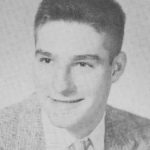 Mr. Schmitt was born April 14, 1939. The family lived at 77th and Ada. “Tom [O’Malley] was at 7715 Racine, so that was two blocks over,” he said. The two started playing softball together as youngsters and became instant friends. His older brother Fran and two older sisters Ann and Betty formed a close, growing brood that had at their disposal the extraordinary facilities and social possibilities of Sabina’s vaunted community center. “Sports kept us off the streets,” Mr. Schmitt said. “We were very fortunate to be part of that parish. In the middle of winter, you could play basketball inside.”
Mr. Schmitt was born April 14, 1939. The family lived at 77th and Ada. “Tom [O’Malley] was at 7715 Racine, so that was two blocks over,” he said. The two started playing softball together as youngsters and became instant friends. His older brother Fran and two older sisters Ann and Betty formed a close, growing brood that had at their disposal the extraordinary facilities and social possibilities of Sabina’s vaunted community center. “Sports kept us off the streets,” Mr. Schmitt said. “We were very fortunate to be part of that parish. In the middle of winter, you could play basketball inside.”
His parents were somewhat eccentric and old-fashioned. They came from a quieter era and were somewhat threatened by rapid social change. “One of the amazing things about my parents is that neither my father nor my mother ever drove, much less owned, a car. They got everywhere on buses or trains.” The family was proud of their German identity; in the middle and late nineteen-forties, being of German heritage was not always easy. During World War II and the period immediately following, anti-German sentiment was acute. The primary job for Mr. Schmitt’s father was a credit manager at Spiegels. “At Sabina, the priests were mostly Irish,” Mr. Schmitt says. “The monsignor didn’t give my mother or my father a break.
“In the neighborhood, there was one Jewish grocer who let my mother and father run a bill. Then when my dad got paid, he’d go back and pay his tab there. My parents had four kids running around, and then my sister Barb was born in 1947. One good thing is that we had a big backyard, and both of my parents were very good gardeners, so we grew almost everything.” Fruit and vegetables were plentiful. The only rule was an unbending one: the family always ate their dinner meal together.
As a boy, young Jerry had tapered legs, a restless spirit and a whirling, untapped energy. Maybe subconsciously he was still trying to make up for that year he missed during the time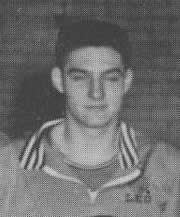 he was recuperating from his illness. The sanitarium was off the lake at 67th and Michigan. “Bob Hope came to visit us. He was one super guy, and I got to shake his hand,” he said. He never felt sorry for himself. He endured the illness, gradually improved and was released. It interrupted his first grade at Sabina.
he was recuperating from his illness. The sanitarium was off the lake at 67th and Michigan. “Bob Hope came to visit us. He was one super guy, and I got to shake his hand,” he said. He never felt sorry for himself. He endured the illness, gradually improved and was released. It interrupted his first grade at Sabina.
He grew like a normal young kid, and was close to five-feet, eight inches, about one-hundred and thirty-five or one-hundred and forty pounds as a 14-year-old boy. He was a natural; Sabina played a pivotal part in his development. Orson Welles famously remarked in making the jump from Broadway to making movies, Hollywood was like the greatest train set any 10-year-old boy could imagine. So was the Sabina Community center; it was a world unto itself that offered an untrammeled innocence and freedom. There were dances, there were roller skating events; the famed “House League,” pitted families against one another, a kind of winner take all that were ferociously contested.
Mr. Schmitt pointed out that sports were not just the preferred means for social organization and discipline, they grounded him and helped him enlarge his consciousness of the world around him. Sabina was great, but it was also a bit cloistered. Sports were the way he visited other parts of the world, which for a young kid from the south side, it felt almost like visiting a different planet, going to Chicago Stadium or Wrigley Field.
Important decision
By his own admission, Leo was not Mr. Schmitt’s first choice to attend high school. It was a simple reason. He loved basketball and he excelled in track, but baseball was his first love. Leo was the neighborhood school, but in the summer of 1954, it had no baseball team. “I really wanted to go to St. Rita because they had baseball,” he said. “I played with Fr. O’Malley in grammar school, and he had probably six or seven baseball teams. I went to Rita and took the entrance test. During basketball season, the Sabina grammar school played the St. Rita Widgets, which Fr. O’Malley coached.
 “We played that game, and they let us stick around for the lightweights [underclassmen] game. So as the varsity team was warming up, [Leo coach Jim] Arneberg out of nowhere turns up. I’d only seen him at Sabina once, maybe, and he handed me ten dollars and told me to take the test at Leo.
“We played that game, and they let us stick around for the lightweights [underclassmen] game. So as the varsity team was warming up, [Leo coach Jim] Arneberg out of nowhere turns up. I’d only seen him at Sabina once, maybe, and he handed me ten dollars and told me to take the test at Leo.
“That same night, I was called into St. Rita. There were a group of men, including Fr. O’Malley. They asked me every question under the sun: how many were in the family, how many were working, they almost asked me what [my parents’] salaries were. I thought they would just look at academics or what kind of sports you played. I really did want to go there. Some of my friends from grammar school were already going there.”
The night took a strange turn. Mr. Schmitt did not receive the kind of assurances he was hoping for, particularly about help with the school’s tuition.
“Rita turned me down basically. I could go there, if I wanted to pay my own way. Arneberg gave me the money to take the exam at Leo.” A former Marine, coach Arneberg cut an imposing figure. “He was a tough guy, and I had the highest respect for him. At first, I was a little hesitant to take the money and I told coach, ‘I’m not sure you’re supposed to be doing this.'” Leo was not exactly a compromise or consolation prize. Leo was a younger school than its big rivals, Mount Carmel or St. Rita. As such, the early pioneers of Mr. Schmitt’s generation established its athletic and community bonafides. It proved another crucial link between excellence and his own growing confidence.
Perhaps best of all, Mr. Schmitt exacted his own brand of revenge. It proved a very sweet tonic. Rita passing him over proved to be fortuitous. “From freshman year on I had all of my best games against Rita.” Years later, St. Rita extended an invitation to their basketball banquet to be featured on their “all-opponents’ team.” It was one of the nicest accolades her ever received.
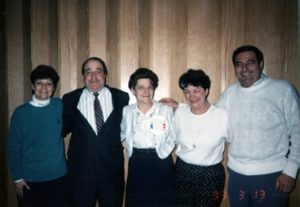
New maturity
Of course Leo was also neither a day at the beach. “I was a little shaky when I started at Leo because the Irish Brothers were rough,” Mr. Schmitt said. “I wasn’t exactly a brain, but I didn’t jug off or mess around. I wasn’t a saint, but I also didn’t screw off. I had common sense, and I really did want to go to college.”
Because Leo did not have a baseball program, Mr. Schmitt threw his considerable energies into basketball and track. At the start of his junior year, he made a stab at playing on the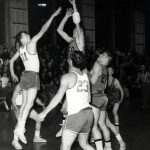 football team. Behind running back star Ed Ryan, Leo won the city’s most prestigious athletic title, the football Prep Bowl. Young Jerry was swept up in the emotion and decided to try out for the team the following year. Unfortunately he had also lost a lot weight, very suddenly; he was very quick, but still, throwing his relatively thin frame against some of the behemoths on the football field, especially during the feared Nutcracker drill, where a runner goes through a line and is pummeled.
football team. Behind running back star Ed Ryan, Leo won the city’s most prestigious athletic title, the football Prep Bowl. Young Jerry was swept up in the emotion and decided to try out for the team the following year. Unfortunately he had also lost a lot weight, very suddenly; he was very quick, but still, throwing his relatively thin frame against some of the behemoths on the football field, especially during the feared Nutcracker drill, where a runner goes through a line and is pummeled.
His decision to quit did not rest well with Arneberg, who found giving up anathema to the Leo credo. In Mr. Schmitt’s era, the basketball teams were not separated by year necessarily but size. Any player who measured five-feet, eight-inches or shorter was automatically consigned to the “lightweights,” regardless of their ability. Mr. Schmitt was right at the diving line. “The first two years I didn’t have any trouble,” he recalled. “We used to measure at De La Salle. The coach watched me really close. They were our biggest rivals back then. They beat us eight times our first two years.”
(One of Mr. Schmitt’s closest friends today was a contemporary of his at De La Salle. His friend was not an athlete. During their moments of banter, the friend would point out De La Salle’s success rate against the Lions. “You weren’t even on the team,” Mr. Schmitt pointed out. “Shut up,” was the friend’s reply.)
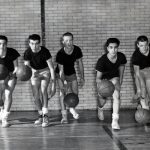 Mr. Schmitt exercised his own freedom that sometimes ran afoul of Arneberg’s strictness. He’d go back and play at Sabina in his off-time just to stay sharp and stay close to friends and the community. “Arne didn’t want us to play outside ball because we were starters on the team and he didn’t want anybody hitting their head, twisting an ankle or basically doing something that messed you up.”
Mr. Schmitt exercised his own freedom that sometimes ran afoul of Arneberg’s strictness. He’d go back and play at Sabina in his off-time just to stay sharp and stay close to friends and the community. “Arne didn’t want us to play outside ball because we were starters on the team and he didn’t want anybody hitting their head, twisting an ankle or basically doing something that messed you up.”
Leo was an all-boys school. Mr. Schmitt’s older sisters went to the public campus at Calumet. Young Jerry was not terribly happy the school dropped the cheerleaders his sophomore year. “There were eight of them: four from Sabina and the rest from surrounding girls’ high schools. I have a photo from 1955 with the cheerleaders,” he said, pausing. “It’s nice to go to the past. It shows I’m still here.”
The Natural
Speed is something you either have it or not. It’s not something you can necessarily develop or learn. Fortunately, Mr. Schmitt was blessed with a flair for movement and quickness. At Leo, he learned how to harness his natural abilities. He married technique to his born talent and the results were startling. The absence of a Leo baseball program proved a boon for the track team.
By his sophomore year, he was a formidable runner who specialized in the two sprints, the 100-yard and 220-yard dashes, and the “broad jump,” today better known as the long jump.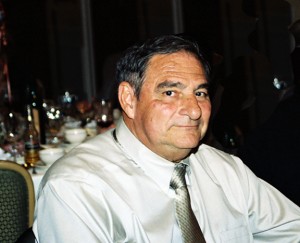 “You ran down the chute and hit the springboard and they measure your jump,” he said. Because they were a separate entity from the rest of the state, Catholic League teams created their own championships. In track during the mid-and late-1950s, St. Ignatius was the powerhouse program. “They had dropped football, so guys that would have played football the coach got them out on the track team. They covered all bases with the hurdles, the pole vaulters; they always had two guys in each event and that’s how they amassed their big numbers.”
“You ran down the chute and hit the springboard and they measure your jump,” he said. Because they were a separate entity from the rest of the state, Catholic League teams created their own championships. In track during the mid-and late-1950s, St. Ignatius was the powerhouse program. “They had dropped football, so guys that would have played football the coach got them out on the track team. They covered all bases with the hurdles, the pole vaulters; they always had two guys in each event and that’s how they amassed their big numbers.”
In track, sometimes a great individual is able to thwart an entire team. That almost happened in May 1956, Mr. Schmitt’s sophomore year. He won the 100-yard dash in 10.4 seconds, the 220 in 22.6 and the broad jump. It was nearly enough to dethrone the powerful Ignatius program. “Ignatius won the title with 36 points, and we came in second with 30 and I had 15 of those points.
He also found a way to satisfy his baseball urge. Because Leo did not have a team, Mr. Schmitt took advantage of a rule that allowed him to play in the summer league with the neighborhood’s Public League team, Calumet. “I played with them in Connie Mack League and the Liberty League,” he said. “I played outfield and I could play first base as well.”
Sports were the dominant influence of his young life, but it did not constitute the sum of his experience. He switched his time between Sabina, going to dances, playing in the House League, and events at Leo. He also worked to help out his family. He took the normal jobs available at the time, like running a paper route. “I washed cars for a year, and I froze,” he remembered. “As Tom [O’Malley], Rich Driscoll and I worked a summer warehouse at 71st and Cicero because Tom was able to get his father’s car,” he said. Again and again, life returned to the dominant social sphere of Sabina. “It stood head and shoulders above everything else. We had a variety show, played ball year round. We practiced track in he gym. They had softball leagues a block down at Racine and 77th.”
A special final year
If Arneberg held his quitting the football team against young Jerry, he showed no outward signs of disapproval. He made Mr. Schmitt one of the team’s basketball captains his junior  year. That Leo lightweight squad was a special team built for speed and endurance that ran most of the competition off the floor. The purist Arneberg did not always play to the team’s strength, Mr. Schmitt said. “Arneberg liked to slow the ball down, and we could run with anybody. Every time we slowed down and froze the ball, it seemed that we lost. We didn’t lose a game in league competition.”
year. That Leo lightweight squad was a special team built for speed and endurance that ran most of the competition off the floor. The purist Arneberg did not always play to the team’s strength, Mr. Schmitt said. “Arneberg liked to slow the ball down, and we could run with anybody. Every time we slowed down and froze the ball, it seemed that we lost. We didn’t lose a game in league competition.”
By his senior year, Mr. Schmitt shot up to five-feet, nine-and-a-half inches. His growth spurt paved the way for a brilliant final year. In lightweights, his superior athleticism mandated he stay under the basket where his speed, quickness and jumping ability were used to corral rebounds and start the fastbreak with outlet passes. Now liberated from that responsibility, young Jerry proved his mettle. He had one of the greatest individual years in the first three and a half decades of Leo basketball. “I might have been the fastest guy in the league,” he said.
He averaged a team best 19 points per game, a figure that made him one of ten best scorers in the league. Mr. Schmitt was named to the all-city teams by the Chicago Sun-Times and Chicago Tribune. He was a lethal outside shooter who used his speed to get to the basket or break down opposing defenses in transition. He was virtually unstoppable. He had personal matches that still retain a powerful hold on his memory and imagination. “I went against Johnny Egan. He played at Rita and later played on Loyola’s [1963] national championship team,” he said.
The team finished third in the Catholic League behind their nemesis, De La Salle and runner-up Loyola. In Mr. Schmitt’s era, the Catholic League did not participate in the Illinois High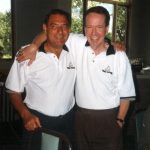 School Association state tournament. Their year ended with the Catholic League playoffs. We opened with St. Mel, beat them and somebody else [in the quarterfinals] and then we lost to De La Salle in the semifinals. They ended up a thorn in my side. During the season, we beat them by 20 and 44 points. Even though we lost, we had the better team that year.”
School Association state tournament. Their year ended with the Catholic League playoffs. We opened with St. Mel, beat them and somebody else [in the quarterfinals] and then we lost to De La Salle in the semifinals. They ended up a thorn in my side. During the season, we beat them by 20 and 44 points. Even though we lost, we had the better team that year.”
The other great allure for sports was that it provided a means to acquire a greater education. Young Jerry always dreamed of going to college but realistically, he knew the onus was on him to find the means to achieve it. Money was tight at home. He was a good though by his own account hardly a great student. His great chance was through sport. His friend Tom O’Malley was away at Loras College in Dubuque, Iowa. “That’s the school I had in mind,” he said. “Chico [Mr. Driscoll] went to Loyola. Arne went to bat for me, and there was a guy named Vince Dowd who’d coached at Leo and he was out at Loras.
“It was a partial ride [scholarship] for basketball, baseball and track, but it all broke down. I’m not sure what really happened, but they ended up not even paying a quarter for my education. I didn’t have any money, or my parents and grants didn’t really exist back then.”
A different kind of career beckoned. If it was not exactly his first choice, Mr. Schmitt approached it with his customary rigor and seriousness. “I started working. I tried to go to work every day, and I went all the way until I retired,” he said. He started his professional career at Sears and then made the move to working an assembly line for the gum and spirits manufacturers, Wrigley. He worked there for four years.
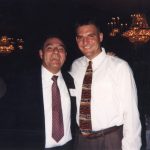 “Then I latched on with the city,” he said. He worked in the forerunner of the Streets and Sanitation department, what was called a stationary fireman. “It was tough work, and I really liked it.” He shifted around different municipal jobs, working the county jail and a heating plant. Not surprisingly, sports remained a constant in his life. He played semi-pro softball and became a mainstay (with coach O’Malley) on the Knights of Columbus team sponsored by Fr. Perez. He also officiated basketball games and umpired softball.
“Then I latched on with the city,” he said. He worked in the forerunner of the Streets and Sanitation department, what was called a stationary fireman. “It was tough work, and I really liked it.” He shifted around different municipal jobs, working the county jail and a heating plant. Not surprisingly, sports remained a constant in his life. He played semi-pro softball and became a mainstay (with coach O’Malley) on the Knights of Columbus team sponsored by Fr. Perez. He also officiated basketball games and umpired softball.
He also met his wife-to-be Loris Marion at a friend’s wedding reception in the mid-1960s. They were married in 1965, and their son, Jerry was born in 1966. Tragically, Mrs. Schmitt passed away from complications of cancer in the early 1970s. “She always wanted to be a schoolteacher,” Mr. Schmitt said. He has four grandchildren. After living in a Crestwood condominium for some 20 years, Mr. Schmitt has resided in a Palos Heights house the last 11 years. In his home study, one of his prized mementos is a photograph that originally appeared in the Chicago Sun-Times of Mr. Schmitt as a boy with several of his favorite Cubs’ players.
Mr. Schmitt retains his affection and strong connection to Leo. He was elected to the Leo Hall of Fame in 1999 and was named its alumni man of the year in 2000. He was elected to the Softball Hall of Fame in 2005.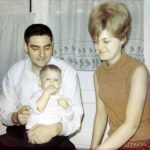
“Leo meant a lot to me. Just the discipline. This was back when they could hit you, but [the Christian Brothers] meant well. They made you pay attention. You didn’t want to throw your parents’ money away. Back then, the tuition was a couple of hundred dollars a year.”
“I guess I’m lucky, I’m living,” he said, contemplatively, the modest lines of a man whose life has been anything but.
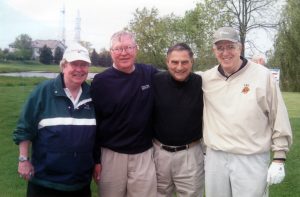
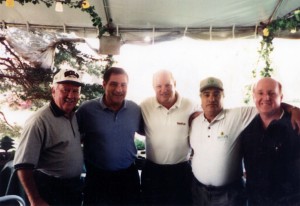
Speak Your Mind